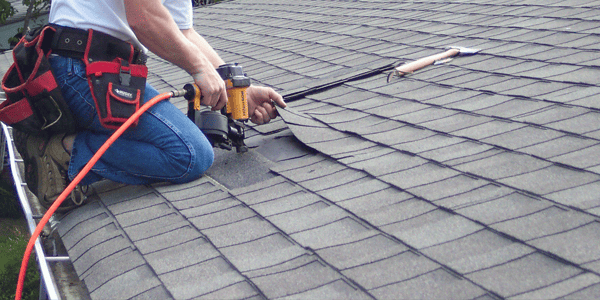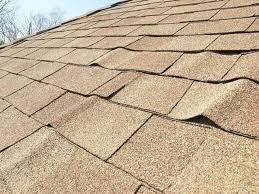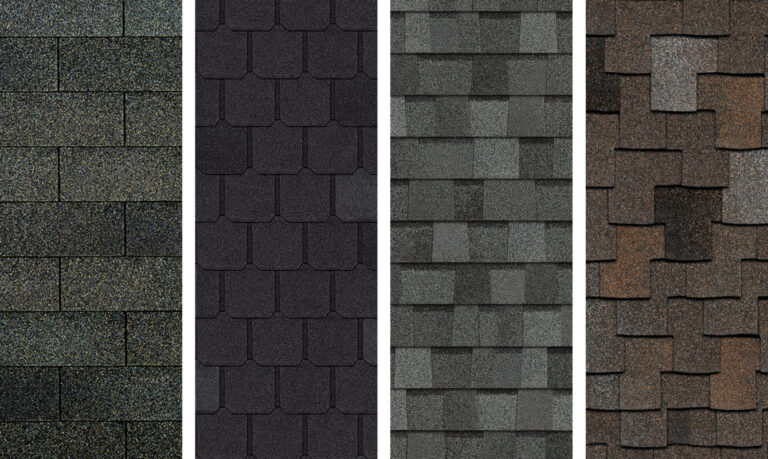Ever wondered, “what is the rake on a roof?” Those sloped overhangs on the gable ends of roofs are called roof rakes, and they play a crucial role in protecting your home from the elements while adding a touch of architectural flair. This comprehensive guide will delve into the world of roof rakes, explaining their purpose, types, common problems, maintenance tips, materials, and styles.
By the end of this read, you’ll be able to identify the rake on a roof of different homes and understand how to maintain them properly to enhance your home’s longevity and aesthetics.
Key Takeaways
- Understanding roof rakes and their purpose is essential for proper maintenance and preventing leaks.
- There are two main types of roof rakes—exposed and enclosed—each with distinct advantages & disadvantages to consider.
- Regular inspections, cleaning, weatherproofing & debris removal are necessary for optimal condition. It’s recommended to call a professional if signs of damage appear.
Understanding Roof Rakes
Roof rakes, also known as rake boards, are an essential part of your home’s roofing system. They extend beyond the exterior walls, providing additional protection and acting as a moisture barrier for your home.

Roof rakes can be made from a variety of materials, including:
- Concrete board or PVC
- Cedar
- Pine
- Smartboard
Knowing their specific purpose and functionality is key to ensuring their proper maintenance and preventing leaks, irrespective of the roofing material used.
Function and Purpose
Roof rakes serve a dual purpose: they act as a moisture barrier and provide aesthetic protection to your home. The eave, a horizontal projection, and the rake, a sloped projection found on gable sides, work together to protect your home from weather-related damage. When selecting materials for your roof rake, factors such as longevity, maintenance requirements, cost, and desired aesthetic should be considered, especially for the top edge of the roof.
The soffit, or the underside of eaves and rakes, can be constructed with various materials. Some options include:
- Perforated vinyl
- Aluminum
- Vented fiber cement
- Wood
Fascia boards, typically crafted from pine or cedar, are an essential component of roof rakes, nailed to the rafter or truss tails. Alternative materials such as solid PVC or vinyl fascia boards offer a more robust solution than wood. They are rot-free and insect-resistant, eliminating the worry of paint peeling.
Roof Rake vs. Roof Eave
Distinguishing between roof rakes and roof eaves is important, as they each have unique functions. Roof eaves are horizontal overhangs, while roof rakes are sloped overhangs situated on the gable sides of the roof. Eaves are located at the lowest point of a roof section, while rakes are inclined projections extending from the eaves to the peak of the roof. Understanding this distinction is vital for proper maintenance and protection of your home’s roofing system.
Due to their sloped nature, roof rakes may lack structural integrity and are only capable of supporting the small fascia board attached to the exterior wall. It is inadvisable to stand on or near the rake end of a roof due to this risk. The slope of roof rakes, including rake board covers, depends on the climate, environmental conditions, and materials used in construction.
Types of Roof Rakes
Roof rakes come in two primary types: exposed and enclosed (boxed-in). Each type offers its own set of advantages and disadvantages, depending on factors such as the architectural style of your home, the local climate, and your personal preferences.
We’ll explore these two types of roof rakes more thoroughly, aiding your understanding of their differences and applications.
Exposed Roof Rakes
Exposed roof rakes are:
- Lightweight
- Designed to match the eaves overhang, sometimes referred to as an overhanging extended rake
- Can be extended beyond the gable end when adequately supported, providing a visually appealing architectural feature.
However, exposed roof rakes may be more susceptible to wind and weather damage than other types of roof rakes. The primary benefit of an exposed roof rake is that it can reduce the overall weight of the roof and extend further than the gable.
Enclosed (Boxed-In) Roof Rakes
Enclosed (boxed-in) roof rakes provide additional protection from external elements, such as wind and rain. They are suitable for homes with hip roofs, gable roof designs, and even metal roof structures, and can be seamlessly incorporated into existing architecture.
Enclosed roof rakes offer greater defense against external elements and are appropriate for areas with a high fire risk. The advantages of boxing in a rake roof include additional protection from the elements and possible requirements in certain localities when a building is situated in a high fire zone.
Common Problems with Roof Rakes
Roof rakes, like any other part of your home, may encounter some common problems. These issues can include:
- Tearing or ripping off shingles
- Potential damage to the roof
- Safety hazards
- The formation of ice dams
- The possibility of scratching skylights
Understanding these issues equips you to take preventative measures and preserve the integrity of your roof rake.
Moisture Damage
Moisture damage can occur if roof rakes are not properly sealed, leading to rotting and deterioration. In climates with heavy rainfall, roof rakes may experience warping and damage to the roof’s structural integrity.
Regular inspection and maintenance of your roof rake is key to preventing moisture damage and ensuring its long-lasting use.
Pest Infestations
Pest infestations can result from gaps in the roof rake, causing damage to the roof structure. Pests such as insects, rodents, and other animals can enter through these gaps, leading to further damage and potential health hazards.
Regular inspections, cleaning, and sealing of roof rakes can help prevent pest infestations and maintain the integrity of your home.
Ice Dams
Ice dams can form on roof rakes, leading to leaks and structural damage if not properly addressed. These ridges of ice are caused by melting snow and ice refreezing on the roof, which can result in damage to the roof and present a safety hazard.
Regular inspection of your roof rake and proactive action can prevent ice dams, thus protecting your home.
Roof Rake Maintenance Tips

Proper maintenance of your roof rake is essential to ensure its longevity and protect your home from potential damage.
In the following, we will share useful tips on regular inspections, cleaning, and weatherproofing to maintain your roof rake’s optimal condition.
Regular Inspections
Conducting regular inspections is crucial to detect damage and prevent issues from escalating. It is recommended to inspect eaves and rakes at least bi-annually, as well as following severe storms that may have caused damage in the vicinity.
Regular inspections can help identify any damage and provide a range of benefits, including safety, preventative maintenance, cost savings, extended lifespan, and protection of the roof and home.
Cleaning and Debris Removal
Removing debris and cleaning the roof rake is vital to prevent buildup and potential damage. It is advised to clean and remove debris from roof rakes on a regular basis using a broom or leaf blower to remove leaves, twigs, and other debris.
Additionally, a pressure washer can be used to remove dirt and grime. Regular cleaning and debris removal helps prevent moisture accumulation, structural harm, and enhances curb appeal.
Weatherproofing and Sealing
To protect your roof rake from the elements, applying a sealant or weatherproofing material is a necessary step. Weatherproofing and sealing can help:
- Protect against water leaks
- Prevent ice damming
- Maintain roof integrity
- Increase durability
Common roofing materials for weatherproofing and sealing roof rakes include asphalt shingles, rubber membranes, and metal flashing. Always use a sealant specifically designed for roof rakes and adhere to the manufacturer’s instructions for application.
Roof Rake Materials and Styles
There are various materials and styles available for roof rakes, allowing you to choose the best option to match your home’s architecture and your personal preferences.
We will explore the variety of material options and style choices available for roof rakes in the following.
Material Options
Material options for roof rakes include:
- Wood: commonly used choice for traditional homes
- Metal: suitable for modern homes
- PVC: suitable for modern homes
- Vinyl: suitable for modern homes
When buying a roof rake, there are various factors to consider. These include longevity, whether there is high maintenance required, cost and what appearance you want it to have.
Style Choices
Style choices for the rake of a roof can vary, with exposed and enclosed designs offering different levels of protection and aesthetics. Overhanging exposed roof rakes are lightweight and designed to match the eaves overhang, providing a visually appealing architectural feature.
On the other hand, enclosed (boxed-in) roof rakes provide additional protection from external elements, such as wind and rain, and are suitable for homes with hip roofs. Your choice of style will depend on factors such as the architectural style of your home, the local climate, and your personal preferences.
When to Call in the Pros
While some maintenance tasks can be performed by homeowners, it is always recommended to consult a professional roofing contractor for roof rake issues. Inspecting a roof rake on your own can be risky due to its delicate nature and reliance on outriggers for support.

We will elaborate on when it’s appropriate to involve a professional for addressing roof rake issues, such as signs of damage and regular inspections, in the following.
Signs of Damage
Recognizing signs of damage, such as warping, sagging, or rotting, is crucial to maintaining the integrity of your roof rake. Calling a professional for repairs or replacement is recommended when there are signs of damage.
A professional roof inspection can facilitate the comparison of notes and enable the identification of the most suitable course of action for any necessary repairs.
Regular Inspections
To keep the roof rake in good shape and tackle any potential issues, it’s important to arrange for regular professional inspections. It is recommended to conduct roof inspections annually, as well as following severe storms that may have caused damage in the vicinity.
Regular inspections can provide a range of benefits, including safety, preventative maintenance, cost savings, extended lifespan, and protection of the roof and home.
A Roof Rake That Stands the Test of Time
Roof rakes play a crucial role in protecting your home from the elements and enhancing its architectural appeal. Understanding the different types, materials, and styles of roof rakes, as well as their common problems and maintenance tips, can help you make informed decisions about the best option for your home. By performing regular inspections, cleaning, and weatherproofing, you can ensure the longevity of your roof rake and protect your home from potential damage.
Remember, when in doubt, it’s always best to consult a pro roofing contractor to address any concerns or issues with your roof rake. Stay proactive and vigilant in maintaining your roof rake, and your home will remain protected and visually appealing for years to come. Contact us for any questions about roof rakes or to schedule an appointment.
Frequently Asked Questions
What is rake of the roof?
The rake of a roof is the exposed portion on the sides of a gable roof that extends from the eave to the ridge of the sloped sides. It covers the top edge of the roof and provides additional protection against potential leaks.
What is the difference between eaves and rakes?
Eaves are horizontal overhangs at the bottom edge of a roof section, while rakes are sloped sections of overhangs extending from the eaves to the roof peak. Gables on a home have rakes overhanging them.
Is a roof rake necessary?
Based on the advice given, a roof rake may not be necessary and could potentially cause more harm than benefit to asphalt shingles and slate shingles. Removing snow can also take away its natural insulation if left on the house.
Where is the rake of the roof located?
The rake of the roof is located at its outer edge, running from the eave to the ridge which forms a horizontal peak.
How often should I inspect my roof rake?
It is recommended to inspect your roof rake bi-annually and after severe storms.



